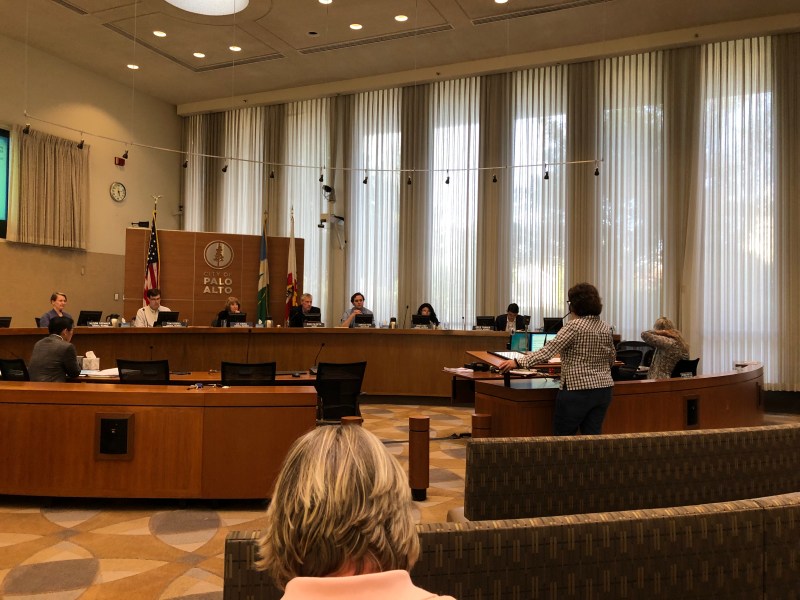The Palo Alto City Council discussed Peninsula Corridor’s 2040 Caltrain Business Plan, Residential Parking Programs (RPPs) and a citywide tunnel on Monday night. The business plan highlights potential scenarios for Caltrain’s future expansion and will involve a partnership with Stanford.
Caltrain
The staff of the Peninsula Corridor Joint Powers Board (JPB), which governs Caltrain operations, came forward to present information regarding the 2040 Caltrain Business Plan.
The plan will be comprehensive, encompassing how Caltrain’s service and business will change over time, the community engagement necessary for Caltrain expansion with respect to grade separation and other impacts and how the JPB will have to evolve to keep pace with these changes. The staff presented three potential growth scenarios — baseline, moderate and high growth — and discussed the infrastructure changes that would be associated with each. Expanding Caltrain to the extent the plan details would relieve freeway congestion, the staff said, as the baseline growth scenario is equivalent to widening the US-101 highway by two lanes.
The staff noted that a major challenge moving forward will be acquiring dedicated funding, as grade separations and crossing improvements are key aspects of the plan. However, they raised the possibility of putting a three-county sales tax on the ballot and emphasized that they will be partnering with Stanford to leverage the university’s contracting capacity and offset the cost of the project. They plan to flesh out a draft of the plan by the end of the year for board consideration.
Parking programs
Wayne from the Parking Staff presented a report on the current state of the RPPs in the city for the council, which unanimously motioned to accept the RPP Program Review Report and to continue reducing available parking permits to prioritize residential parking. RPPs provide preferential parking privileges to residents and employees of businesses within a specified district.
Currently, Palo Alto has a combination of a few straightforward RPP areas as well as a Citywide RPP Ordinance that is much more complicated than RPPs in other cities. Wayne reported that this complexity came from the city attempting “balancing the desires of residents to reduce parking within neighborhoods and the needs of adjoining businesses for customer and employee parking.” This use of RPPs, “has been partially successful.”
“The end goal is availability of parking,” the staff said.
Tunnel
The city council discussed a city tunnel as part of possible grade separation option for future high speed rails.
The tunnel would run north to south, beginning 500 feet north of Churchill Avenue and ending at the southern boundary with Mountain View. The staff and council discussed extensively the possibility of alternatives to have the tunnel run adjacent to existing rail or launching temporary “shoofly” tracks using existing tracks. Staff said that construction near existing rails would only be feasible near Alma Street and that this would still require significant costs and impacts to property near the rails.
Housing concerns
In the general comments from the public, several residents expressed concerns about protections for long-term renters in Palo Alto who are unable to afford rising rents and are being evicted.
During the review of the calendar items, a couple residents spoke against the Wireless Ordinance that was approved on April 15. Residents are concerned about cell towers being implemented without their input, and that there are towers in close proximity to Barron Park which does not align with the council’s recommendation of a minimum distance from school zones.
Mayor Eric Filseth also made a proclamation honoring Affordable Housing Week in Palo Alto, calling upon community members to support affordable housing solutions. Sheryl Klein, a board member of Palo Alto Housing who helped spearhead the proclamation, posed for a picture with the mayor and said a few words.
“We really are in the middle of a humanitarian crisis,” she said. “Too many of our friends, neighbors and residents have been left behind in this economic boom. So I encourage you to do all that you can to help expedite the creation of more affordable housing.”
Contact Nohemi Davila at nohemi ‘at’ stanford.edu and Kaylee Beam at kbeam97 ‘at’ stanford.edu.
